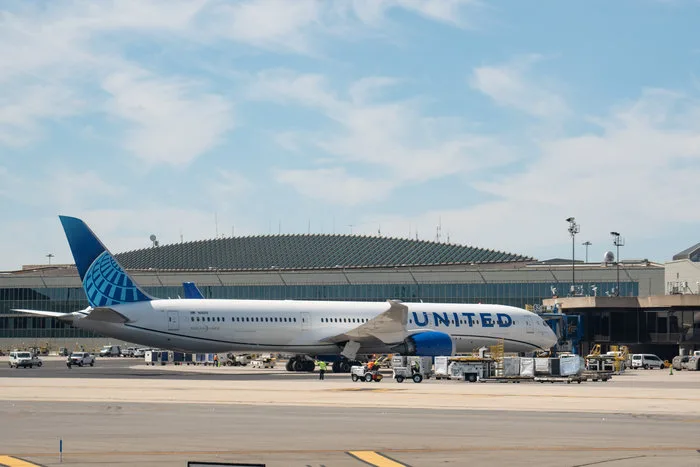By Jacob Burg
The Federal Aviation Administration (FAA) said this week that it was making the unprecedented decision to reduce flights by 10 percent through 40 “high-volume” markets starting Nov. 7 to ensure air travel remains safe as unpaid air traffic controllers begin to show signs of fatigue during the federal government shutdown, now the longest in U.S. history.
The move could have major impacts throughout the country, as the FAA oversees more than 44,000 flights every day, including commercial and private flights and commercial cargo flights.
The affected markets include Hartsfield-Jackson International Airport in Atlanta, the world’s busiest airport by total traffic, John F. Kennedy International Airport, Miami International Airport, LaGuardia Airport, Chicago O`Hare International Airport, and Newark Liberty International Airport.
“I’m not aware in my 35-year history in the aviation market, where we’ve had a situation where we’re taking these kind of measures,” FAA Administrator Bryan Bedford said at a news conference on Nov. 5. “We’re in a new territory in terms of government shutdowns.”
Shem Malmquist, who has worked in aviation for nearly 40 years, including as a commercial pilot, professor, and safety consultant, confirmed to The Epoch Times that this is the first time in history the FAA has taken these steps and said that air traffic controllers “need to be paid” during the ongoing shutdown.
The FAA released the emergency order Thursday evening, which implements a 4 percent reduction in flight traffic at the 40 airports starting Nov. 7. The agency will increase the rate to 6 percent on Nov. 11, to 8 percent on Nov. 13, and finally to 10 percent on Nov. 14. The operation reductions will occur between the hours of 6 a.m. and 10 p.m. at each airport.
“The FAA’s initial review of data indicates the system is stressed. With continued delays and unpredictable staffing shortages, which are driving fatigue, risk is further increasing, and the FAA is concerned with the system’s ability to maintain the current volume of operations,” the agency wrote in its order.
Here’s everything you need to know about the FAA’s decision to reduce air travel by 10 percent across the nation’s busiest airports.
Existing Controller Shortage Compounded by Shutdown
The FAA has struggled with staffing air traffic controllers ever since 1981, when President Ronald Reagan fired more than 11,000 air traffic controllers who were striking, viewing it as an illegal strike. While the agency would eventually hire large numbers of new controllers, the FAA never returned to its pre-1981 staffing levels.
In August, Bedford said the agency was planning to hire 9,000 new controllers by 2028 to dig itself out of the decades-long shortage of these workers who are critical for aviation safety.
Speaking alongside Bedford at the press conference on Wednesday, Transportation Secretary Sean Duffy said the FAA is currently short of 2,000 controllers and has recently increased the number of trainees in its academy by 20 percent.
The shutdown, which has forced already-stressed and overworked air traffic controllers to continue clocking in daily without receiving pay, has made the matter worse.
“Controllers have been working fastidiously for the last five weeks with this huge burden over their head of lack of compensation, and we are starting to see some evidence that that fatigue is building in the system in ways that we feel we need to work towards relieving,” Bedford said.
In a webinar the National Business Aviation Association (NBAA) hosted minutes after the FAA released its order Thursday night, NBAA Vice President Heidi Williams said the government shutdown is one of the challenges that has added to the complexity of the national airspace system, creating some of its most challenging days since the funding lapse began.
“Staffing triggers are another, and we’ve seen the volume of staffing triggers go up significantly as additional strains are put on the workforce,” she said. “Every time that there’s not a body in a seat to work traffic, there is an impact somewhere in the system, and often it’s well beyond the facility where that staffing trigger takes place. There’s a ripple effect.”
Recent Aviation Incidents Emphasize Need for Safety
Duffy said on Wednesday that the decision to reduce air travel by 10 percent throughout the country “was not taken lightly” and that the FAA’s history of near misses in the national airspace—which culminated in a midair collision over the Potomac River in January that resulted in 67 deaths—influenced the move.
“There was a lot of effort put into this. And if you remember with the [Ronald Reagan Washington National Airport] air crash, a lot of you asked us questions, why didn’t the FAA see that there were near misses in the airspace, and why didn’t you stop the cross traffic with helicopters and airplanes?” Duffy said.
“We learned from that. And so now we look at data, and before it would become an issue, we try to assess the pressure and try to make moves before there could be adverse consequences. And that’s what’s happening here today.”
Bedford said the FAA is no longer going to wait for issues to occur before it takes action. Earlier this year, during a three-day fact-finding hearing into that deadly midair crash, the National Transportation Safety Board (NTSB) accused the FAA of knowing of safety risks before taking action.
“We’re not going to wait for a safety problem to truly manifest itself when the early indicators are telling us we can take action today to prevent things from deteriorating,” Bedford said on Wednesday. “The system is extremely safe today and will be extremely safe tomorrow. If the pressures continue to build even after we take these measures, we’ll come back and take additional measures.”
Impacts on Airlines
Thousands of flights had already been delayed on Thursday, the day before the 10 percent reduction takes effect. According to data from the FlightAware tracking service, there were more than 2,350 delays within, into, or out of the United States as of noon on Thursday, with more than 50 cancellations also reported.
United Airlines, Southwest Airlines, and American Airlines all said they would try to minimize the impact on customers as they work to reduce their schedules to 90 percent of their usual capacity to comply with the FAA’s order.
United CEO Scott Kirby, in a letter to employees, said the company will prioritize cutting regional routes and flights that aren’t traveling between hubs. He also said United will try to reschedule customers where it’s possible and will provide refunds to anyone who wishes not to fly at this time, even if the customer’s flight hasn’t been officially canceled.
“United’s long-haul international flying and our hub-to-hub flying will not be impacted by this schedule reduction direction from the FAA,” Kirby said.
When asked about the economic impact of this reduction order, Duffy said “there are a lot of equities at play” but the number one factor is safety.
“Am I concerned about disruption in the airspace on Friday? Yes. But again, we want to make sure we are doing the right measures, implementing the right measures, to make sure we have the best outcomes,” he said.
“We’ve talked to a number of the different airlines … are they supportive that we are working overtime to make sure the airspace is safe? Yes, and we will, we will team up and partner with them and make sure that they have enough time to, as best as they can, minimize the disruption to the airspace to the administrator’s point, because it’s data-driven,”
Data Will Dictate if Reductions Continue
Duffy said the Transportation Department and FAA will analyze data to determine if air travel reductions will continue into the future while the government remains shut down.
“We’re going to use data. The data will dictate what we do. Again, if the data goes in the wrong direction, could you see additional restrictions? Yes. If the data goes in the right direction, we will roll this back, but it’s going to be data-driven, safety-driven,” Duffy said.
Williams, the NBAA’s vice president, said there’s a “pressure test right now, ongoing” with the shutdown’s impacts on the national air system and the air traffic controllers who maintain it.
“I think we’re all going to have to have an abundance of patience and a recognition that our nation’s fantastic workforce is doing a stellar job at what they do,” she said.
The FAA’s order “speaks to the fact that it will extend through the shutdown, and as we see government funding restored, that there will be an analysis to ensure those restrictions are lifted as the risks are minimized,” Williams said.
She said she doesn’t know when the reduction order will be lifted before the government reopens.
“I think there could be a transition period to ensure we remain the safest system globally. And I think the FAA administrator and the transportation secretary have ensured everyone in this proactive measure that they are making sure that safety is paramount, and they’re going to do whatever it takes to ensure that that remains,” Williams said.
T.J. Muscaro, Jack Phillips, and The Associated Press contributed to this report.






